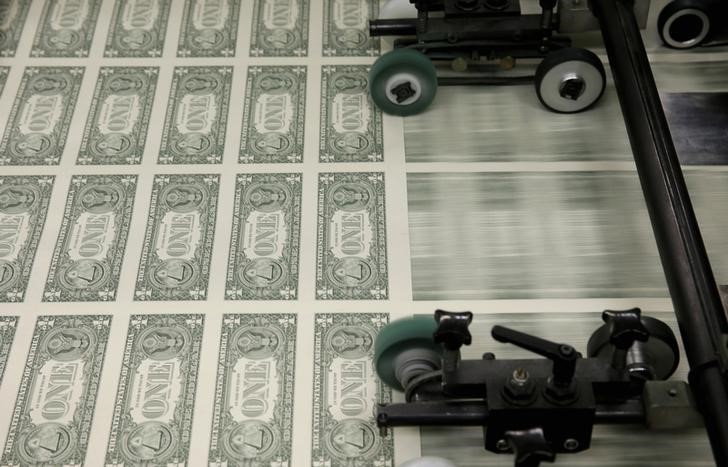Investing.com - The dollar pushed lower against against the other major currencies on Wednesday, after data showed that U.S. inflation ticked lower last month and as investors awaited the Federal Reserve's highly-anticipated policy statement due on Thursday.
The dollar was steady against the yen, with USD/JPY at 120.48.
The Commerce Department said consumer prices edged down by 0.1% last month, in line with forecasts following a 0.1% increase in July. Consumer prices inched up 0.2% on a year-over-year basis, in line with expectations.
Core consumer prices, which exclude volatile food and energy costs, increased by 0.1%, also in line with the consensus forecast and was 0.2% higher from the same month a year earlier.
Investors remained cautious amid uncertainty over whether the Fed would hike short term interest rates for the first time in almost a decade on Thursday.
An increase in interest rates would boost the greenback by making it more attractive to yield-seeking investors.
Fed Chair Janet Yellen has said that an interest rate increase is data dependent but has also indicated that she expects to begin raising rates before the end of the year.
The dollar was lower against the euro, with EUR/USD rising 0.28% to 1.1302, off lows of 1.1215 hit earlier in the session.
Final data on Wednesday showed that the euro zone consumer price index was flat in August, compared to expectations for a 0.6% fall.
Elsewhere, the dollar extended losses against the pound and the Swiss franc, with GBP/USD up 1.07% at 1.5507 and with USD/CHF sliding 0.64% at 0.9678.
The Office for National Statistics earlier reported that the U.K. claimant count rose by 1,200 last month, compared to expectations for a decline of 5,000.
Average earnings, including bonuses rose by 2.9% in the three months to July from a year earlier after a 2.6% increase in July, ahead of forecasts of 2.5%.
The report also showed that the U.K. rate of unemployment ticked down to 5.6% in the three months to July, better than forecasts for 5.6%.
The Australian and New Zealand dollars were stronger, with AUD/USD gaining 0.63% to 0.7187 and with NZD/USD rising 0.22% to 0.6369.
Meanwhile, USD/CAD fell 0.23% to trade at 1.3219.
In Canada, data earlier showed that manufacturing sales increased by 1.7% in July, beating expectations for a 1.0% rise. Manufacturing sales gained 1.5% in June, whose figure was revised from a previously estimated 1.2% rise.
The U.S. dollar index, which measures the greenback’s strength against a trade-weighted basket of six major currencies, was down 0.37% at 95.40.
